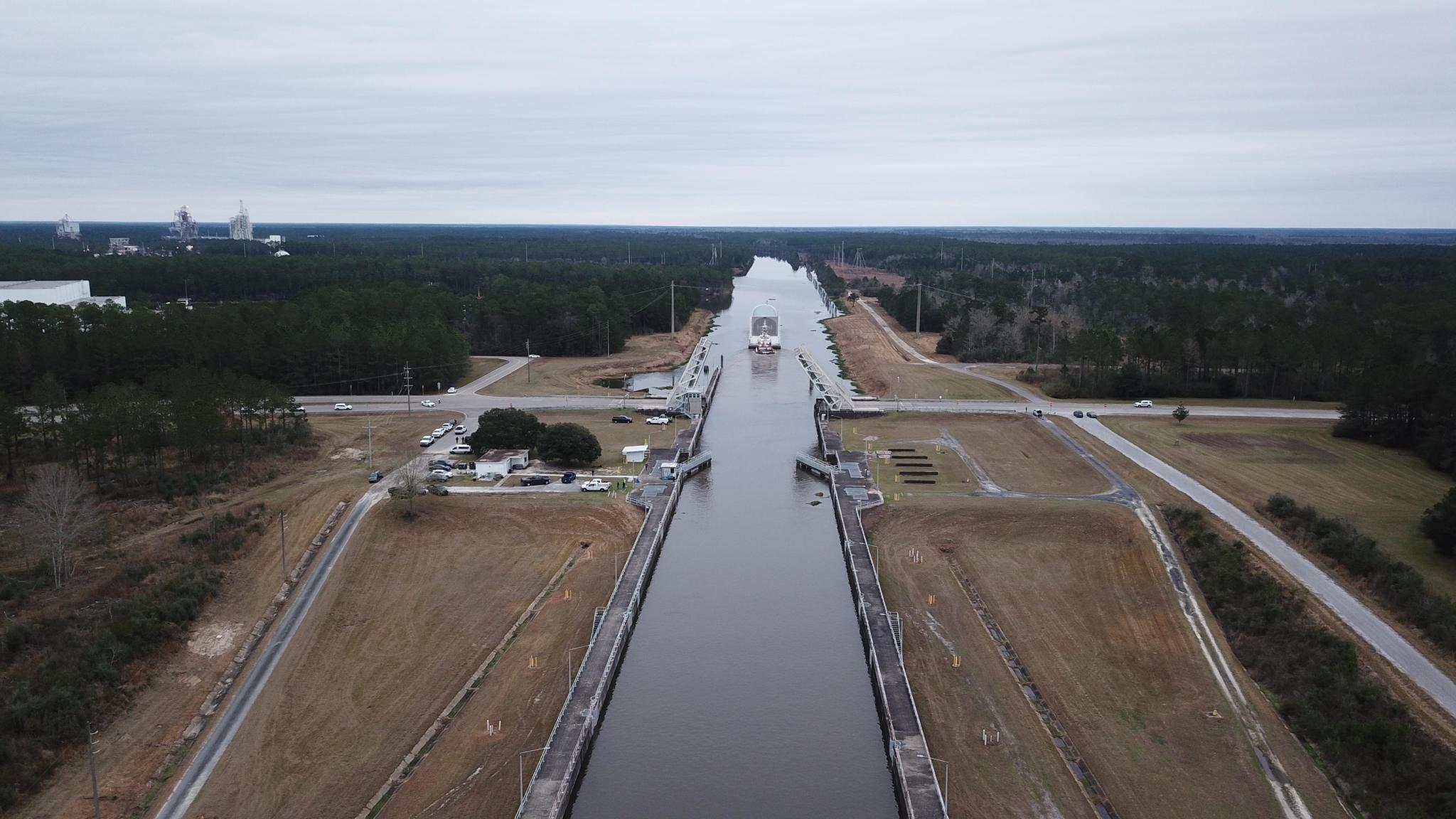‘It’s a Lock’
Waterway access to NASA’s Stennis Space Center is critical for the transport of large flight hardware and equipment. A recent project focused on refurbishing the center’s decades-old waterway lock system to ensure the key piece of infrastructure maintains safe operating condition.
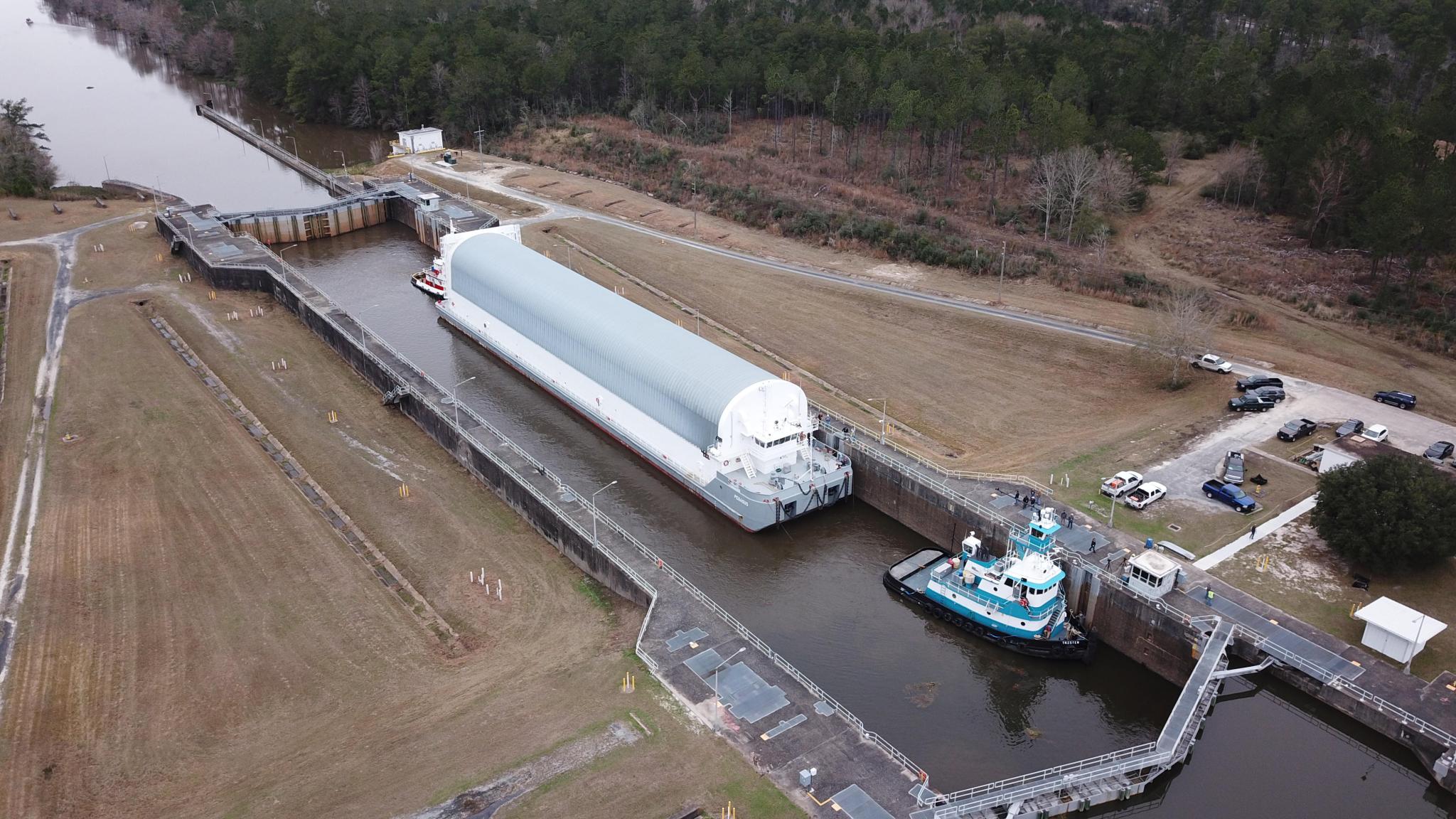
What the Project Involved
The renovation of the navigation lock system at NASA Stennis began last November when crews removed the miter gates for inspection and refurbishment of the structural steel. The system is critical in providing site access for large equipment and test articles that cannot be transported by land. It also maintains a constant water level for the NASA Stennis canal system that connects all large test stands on site. The refurbishment project was launched after engineers determined the lock system – built in the 1960s – needed extensive refurbishment. The first step involved placement of a temporary retaining wall, known as a stop log, on Nov. 14, 2022.
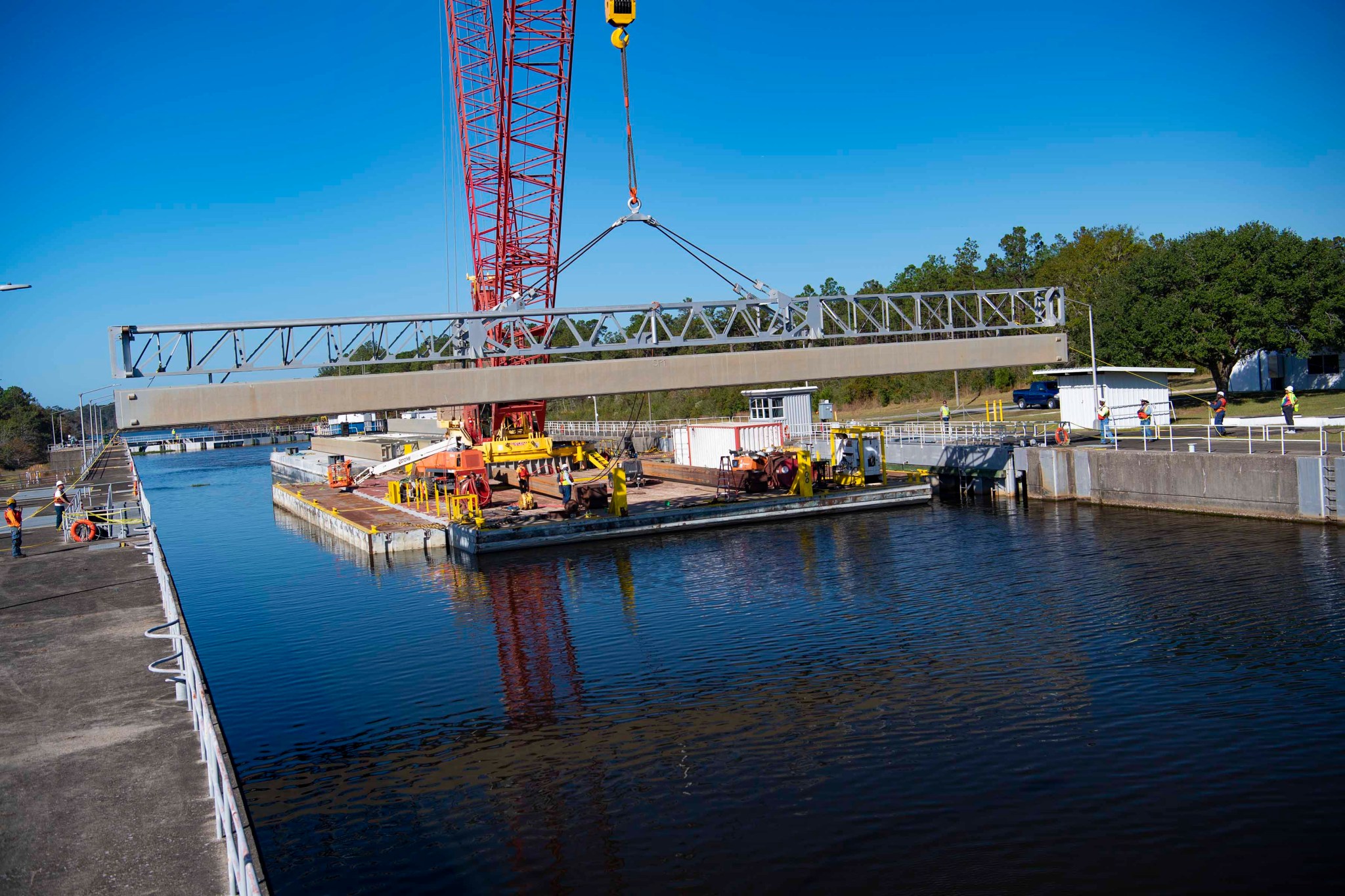
Why a Stop Log Was Needed
Work to install a temporary stop log at the NASA Stennis lock system was completed Nov. 14, 2022. Placement of the wall was key to help maintain water level in the NASA Stennis canal system while crews completed the extensive refurbishment project. Typically, the water level of the NASA Stennis canal system is about 16 to 18 feet higher than the Pearl River. When a vessel travels to NASA Stennis, the lock system and its miter gates allow operators to raise the watercraft from the lower river level to the higher canal level. “We have never had a situation where we were trying to get a vessel through the lock system where the gates could not operate properly, and the vessel had to hold,” said NASA project manager Dale Woolridge. “However, we were beginning to experience leaking during the opening and closing of the gates, so it was time to get this project done to continue with a successful operation moving forward.”
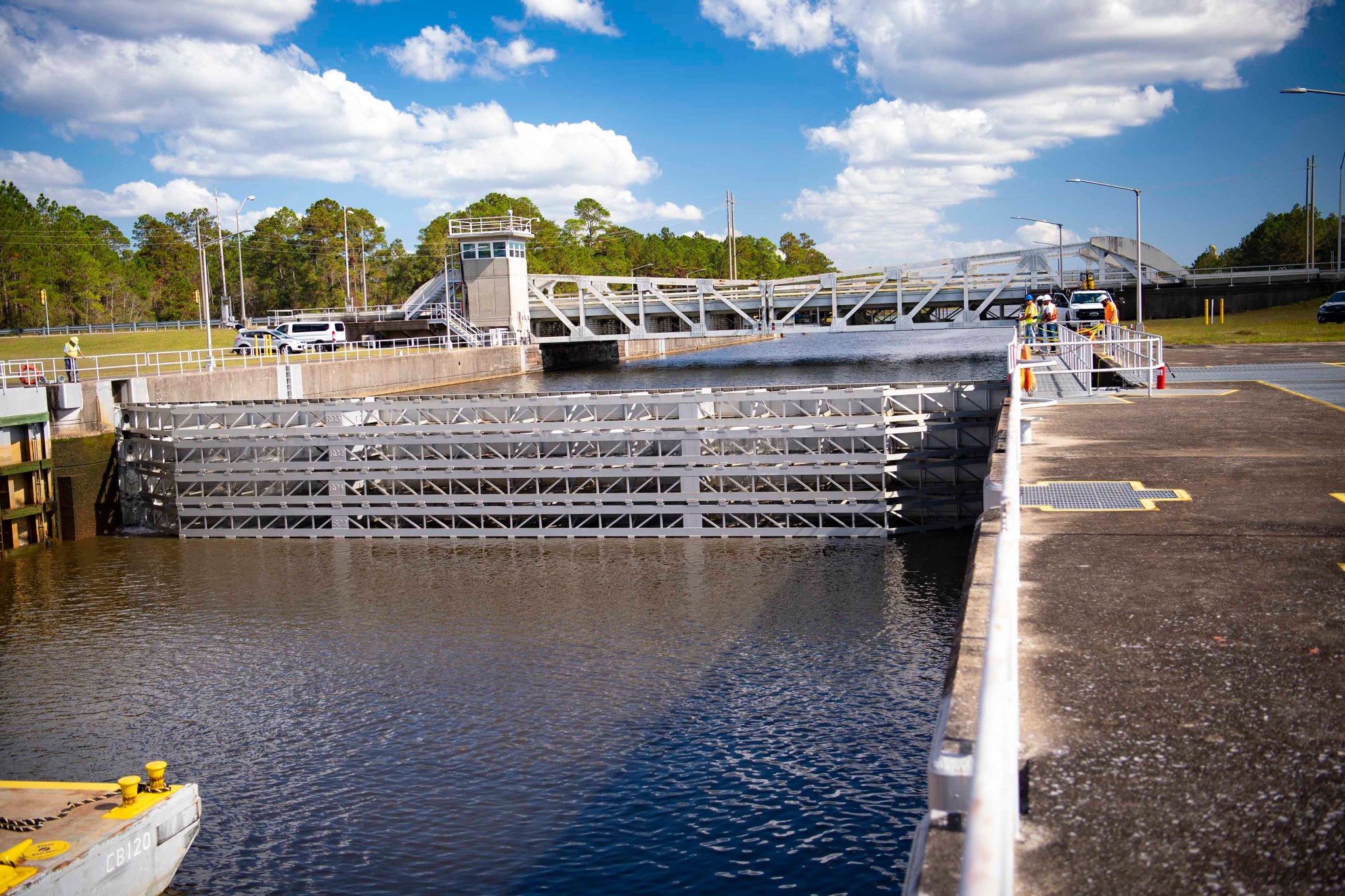
What Happened Next
Once the stop log was installed, crews used a crane on a floating barge to lift the four miter gates of the navigation lock system at NASA Stennis, as shown in this photo from Nov. 21, 2022. The four gates, each weighing 270,000 pounds, were taken off site to undergo full inspection and refurbishment. Previous work on the lock system was performed with the gates in place, which made this project a first-of-its-kind. NASA project manager Dale Woolridge credits the original design, skilled operations, and regular maintenance of the lock system for the gates exceeding their 50-year design life.
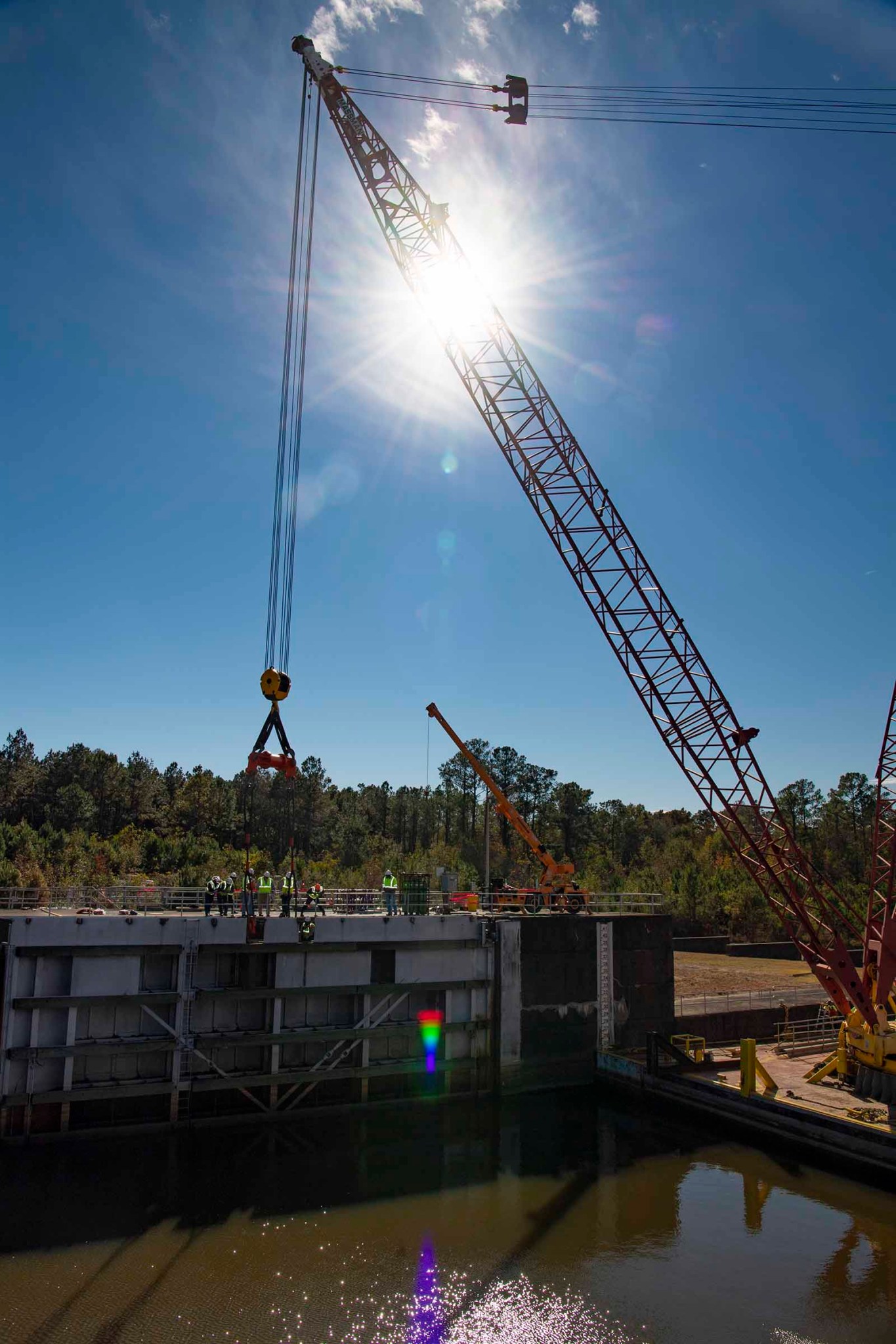
A Sizable Endeavor
Removal of the miter gates at the NASA Stennis lock system in November 2022 was no small undertaking, as the accompanying image illustrates. The four gates are each seven feet thick and measure 60 feet by 40 feet. “It was very interesting to me,” said NASA project manager Dale Woolridge said of the refurbishment effort. “As a civil engineer, this is what I like. Refurbishment of the structure reduces risks to the perfect operational record. We cannot have a piece of spaceflight hardware meant for the Moon trapped on Earth due to a broken lock gate.”
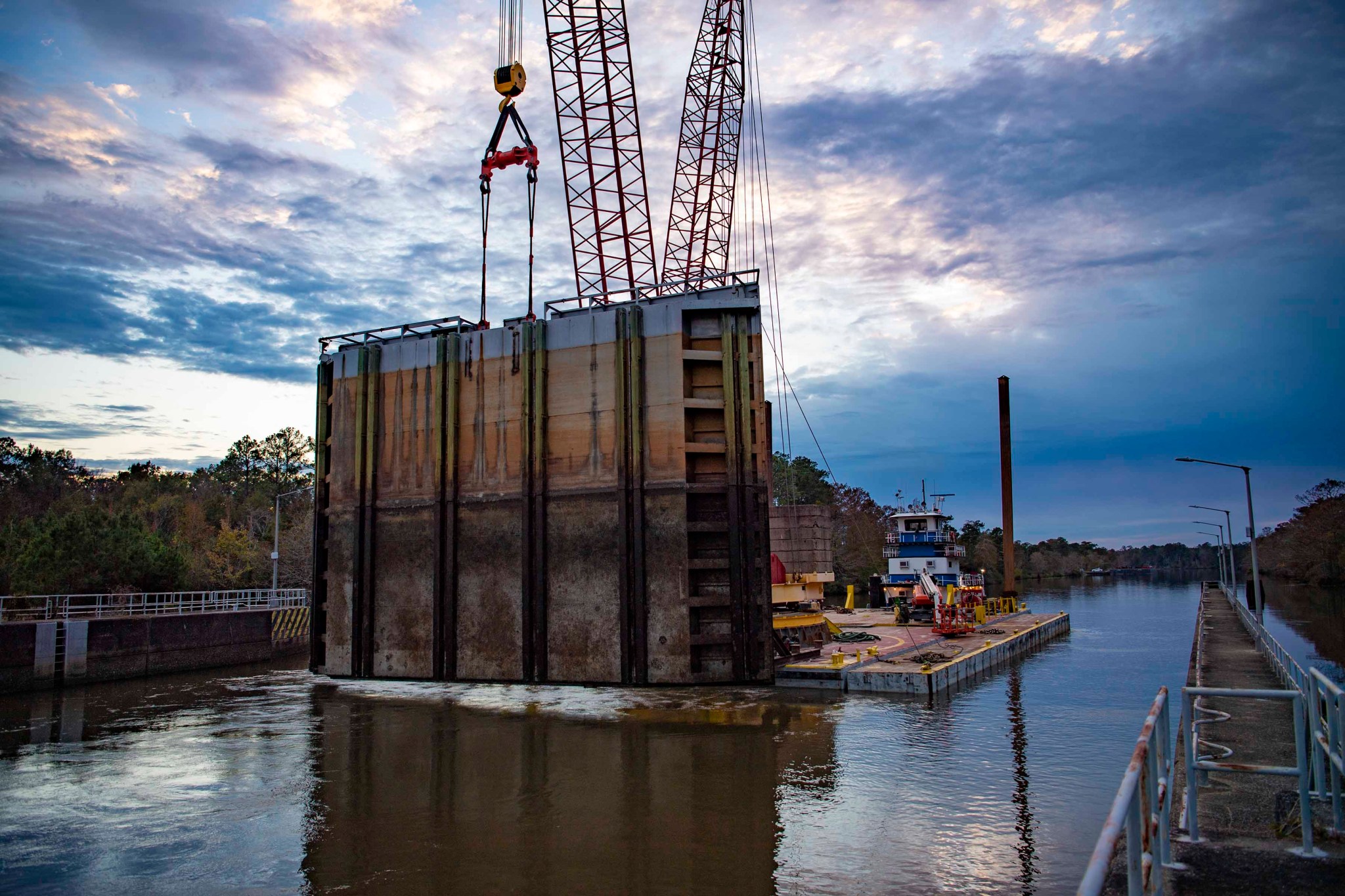
NASA Stennis Completes Key Infrastructure Project
NASA Stennis project manager Dale Woolridge discusses the recent refurbishment work on the NASA Stennis waterway lock system, critical infrastructure for the nation’s largest propulsion test site.
Watch More NASA Stennis VideosHow Long Refurbishment Took
The miter gates for the NASA Stennis lock system returned on site in July 2023, following a seven-month refurbishment effort. Crews move the gates using a crane and floating barge. The project was implemented through the U.S. Army Corp of Engineers and performed by contract work. “The Corps is doing a great job,” NASA project manager Dale Woolridge said in November. “The contractor did a great job (handling the gates). There is a lot of risk in lifting something that big.”
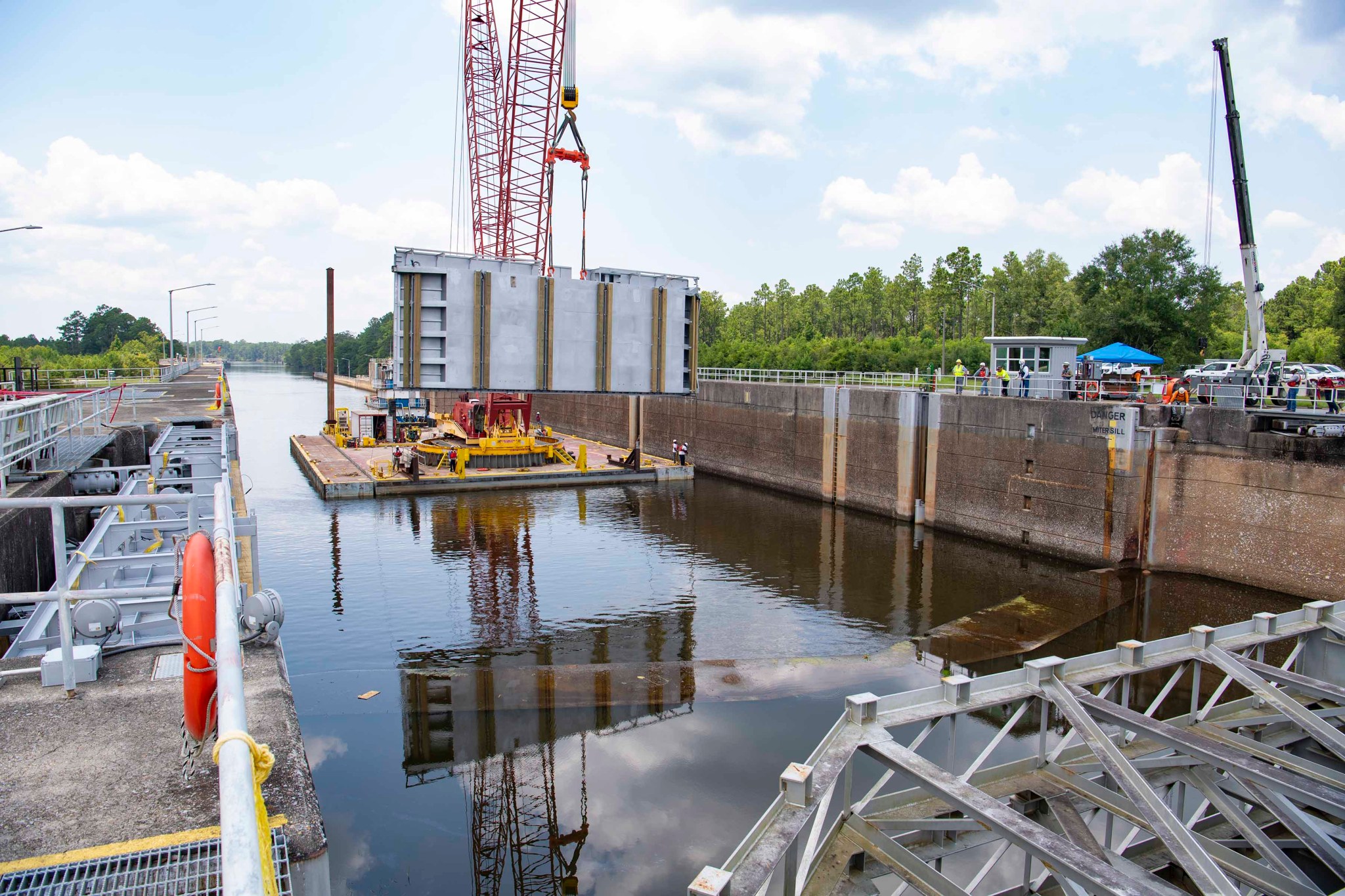
Re-installation Ensures Continued Operations
Re-installation of the four miter gates to the NASA Stennis lock system was critical to restoring operational status. The temporary retainer wall helped maintain the water level of the NASA Stennis canal system during the project. However, it was immovable, which meant access to the site and its large test stands was not possible throughout the project. The project marked the first time the gates had been removed from the system since they were originally installed almost 60 years ago. Previous maintenance was performed with the gates in place.
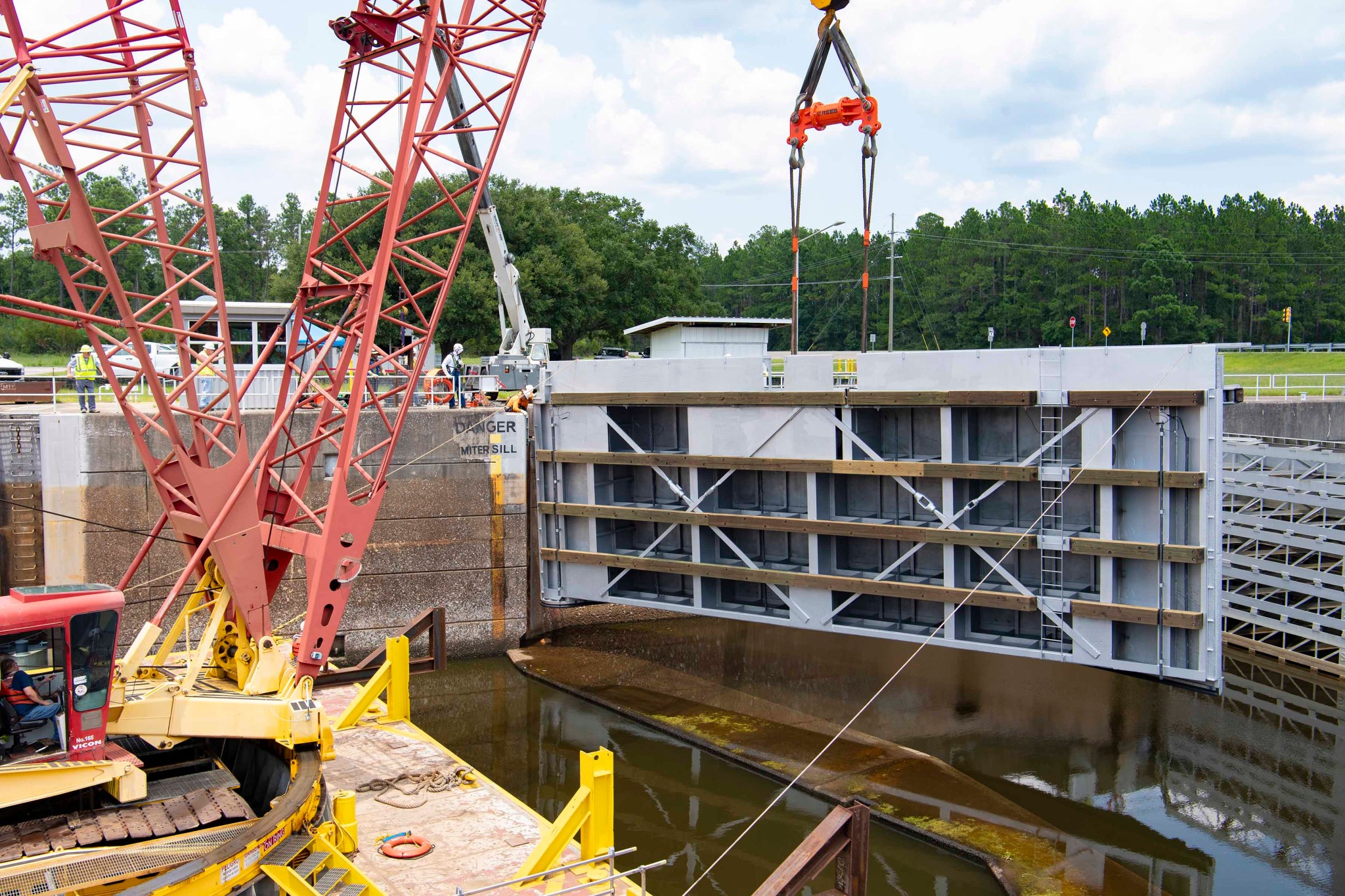
Completing the Task
Crews positioned the final refurbished miter gate into place on July 27, signaling near completion of a first-of-its-kind project. The accompanying image shows the size of the 270,000-pound gate in comparison to the work crew. The NASA Stennis lock system has proved vital for delivering flight hardware and other equipment during the Apollo and Space Shuttle Programs, as well as for transporting items for SLS (Space Launch System) testing to support NASA’s Artemis missions to the Moon.
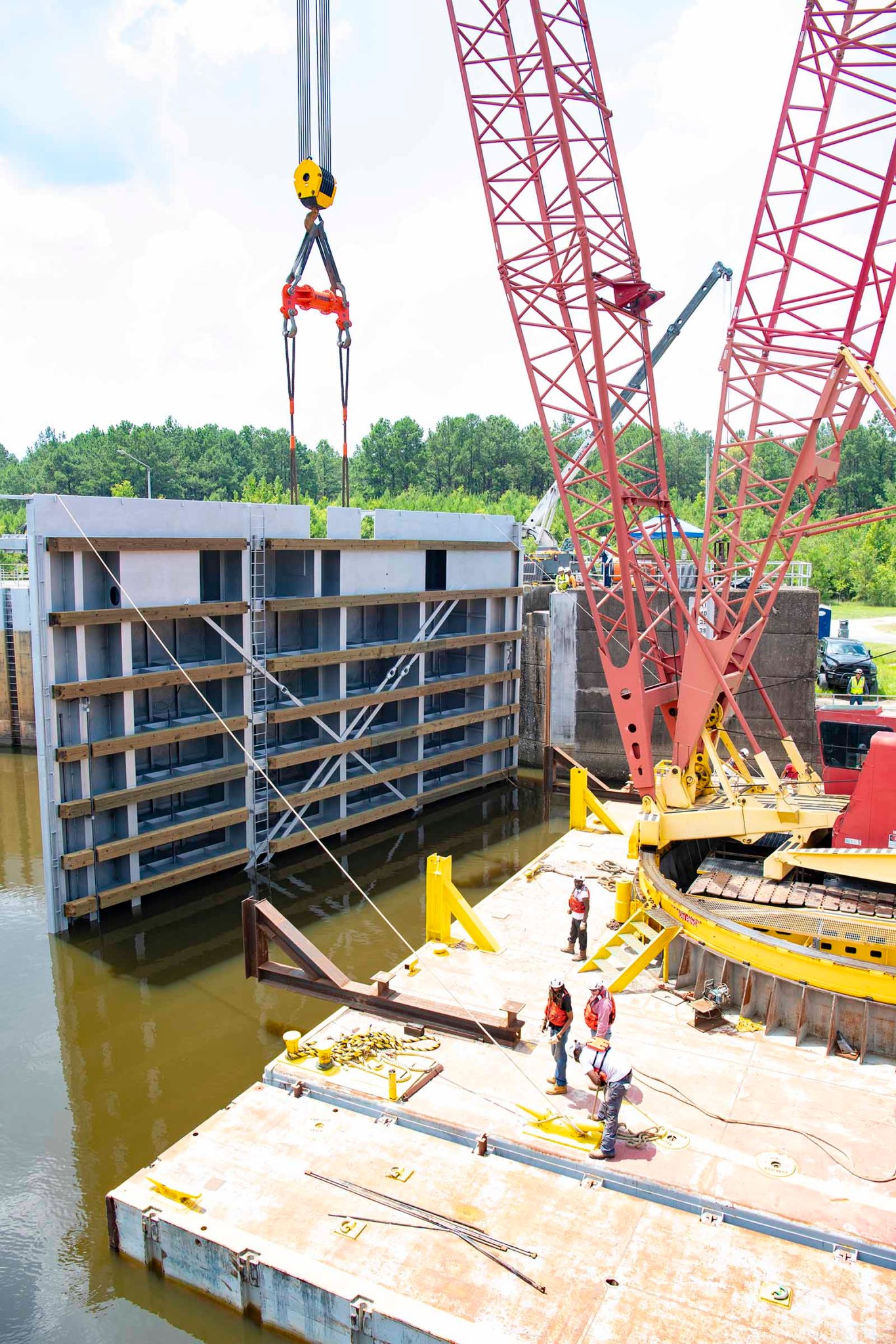
A Successful End
Crews conducted a test of the navigation lock system Aug. 3, following successful installation of the four refurbished gates. Final testing of the refurbished gates culminated months of hard work and restored the lock system to full working status. “The project is just one of many that ensures the ability of Stennis to maintain future test operations,” NASA project manager Dale Woolridge said.
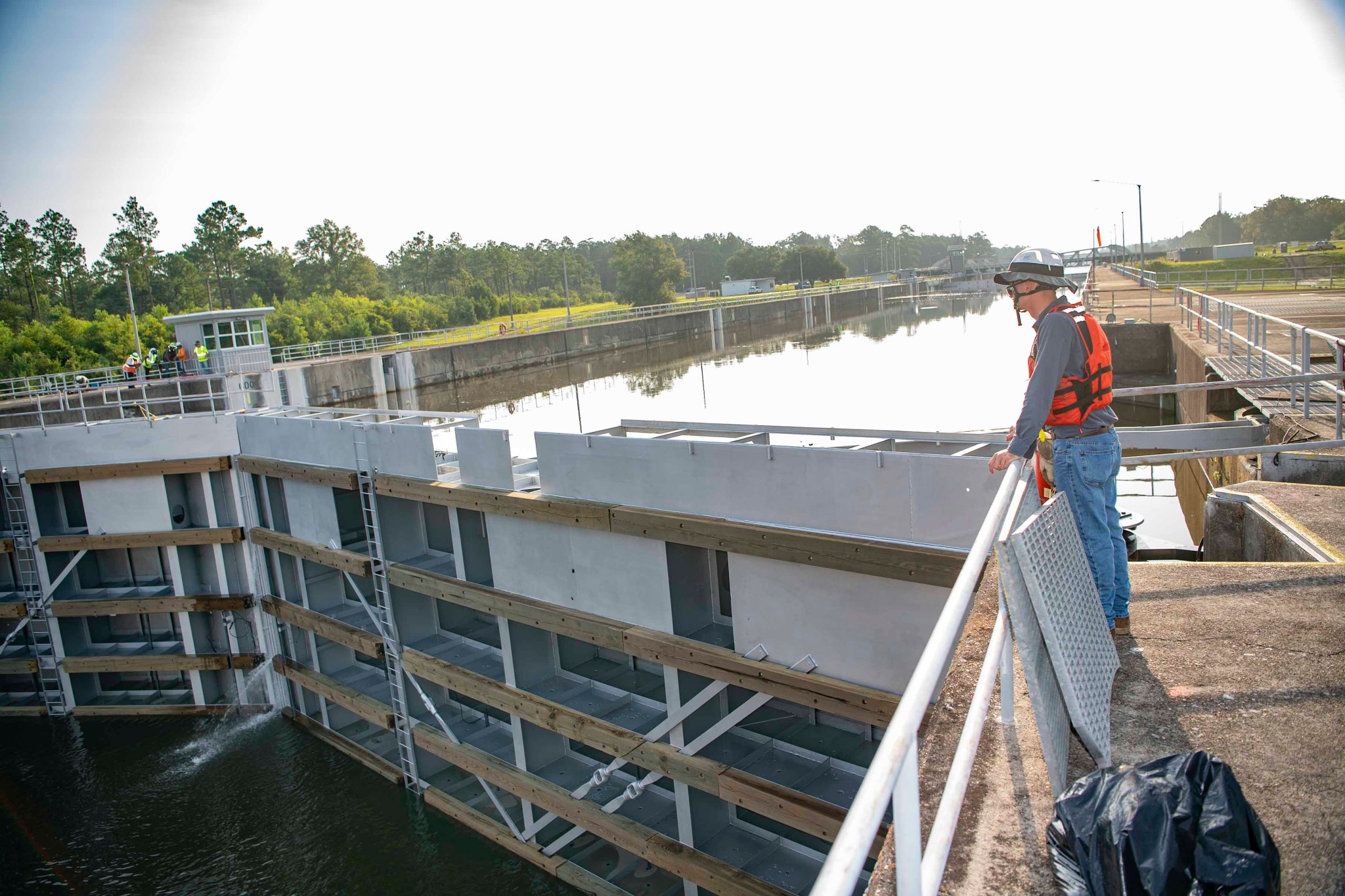
Open Waterway
Refurbishment of the NASA Stennis waterway lock system involved months of work but ensures the system is in optimal condition, keeping the nation’s largest propulsion test center accessible to critical marine transports.
